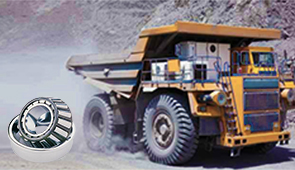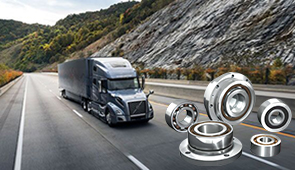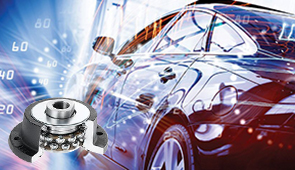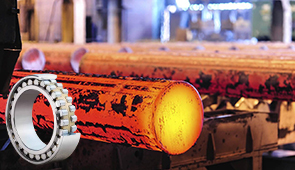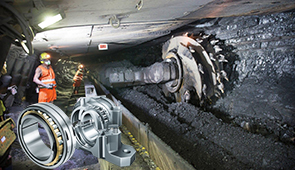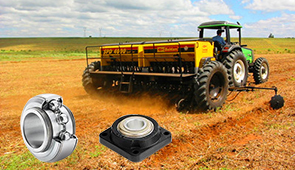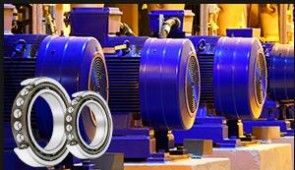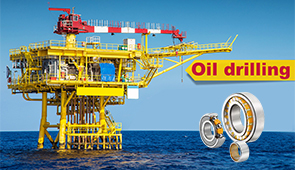Cam Followers and Track Rollers: Understanding Their Functionality and Applications
Cam followers and track rollers are indispensable components in a wide range of mechanical systems, from industrial machinery to automation equipment. Designed to handle high radial and axial loads, these specialized rolling elements excel in scenarios demanding precision, durability, and resistance to wear under dynamic conditions. But what exactly makes cam followers and track rollers so critical to the operation of modern machines? This article will delve into their core functionalities, explore the mechanics behind their design, and examine their diverse applications across industries such as manufacturing, automotive, and material handling. Whether you’re an engineer, a technician, or simply curious about advanced mechanical systems, understanding the role of these components is essential to optimizing performance and reliability.
Introduction to Cam Followers and Track Rollers
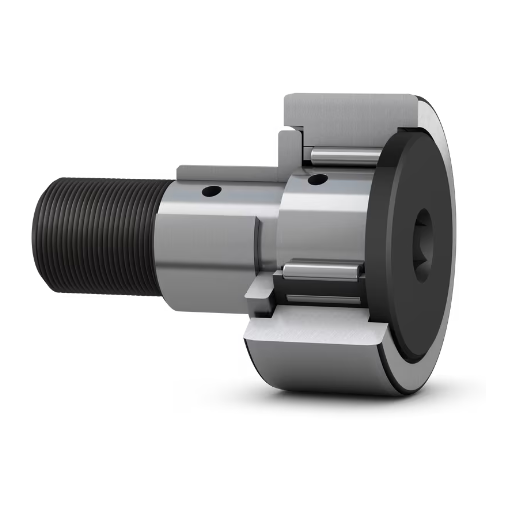
What are Cam Followers?
Cam followers are special types of roller bearings that travel along a cam surface or track to convert rotary or axial motion into a very accurately directed motion. They are designed to take heavy radial loads and reduce friction within the cam and track system. Generally, such bearings will consist of a thick-walled outer race, an inner stud or shaft, and needle or cylindrical rollers for smooth operation in heavy-duty applications.
Among the key advantages of cam followers lies their suitability for intermittent motion and varying loads. The sturdy construction of these cam followers, often including treated surfaces with anti-friction coatings or equipped with seals, enables their use in some of the harshest environments-challenging dirt, moisture, and extreme temperatures. A cam follower is indeed one of the mechanical elements of motion needing high accuracy so that it can transfer motion with minimum wear and speed.
Cam followers can find applications through a vast array of industries-from manufacturing equipment to agricultural machinery, and beyond into robotics. Their flexibility accommodates specific designs, for instance, stud-type cam followers for tight spaces or yoke-type in applications requiring higher load capacity. Correctly understanding their selection, lubrication, and maintenance is crucial for the life span of the cam follower itself as well as of the system it belongs to.
Importance of Bearings in Mechanical Systems
Bearings are basic components in mechanical systems as they reduce the friction between moving parts, permitting free motion and increasing the efficiency of machines. By minimizing resistance, these bearings ensure that the mechanical processes and systems are carried out with less loss of energy and also reduce the wear and tear on this equipment, thereby extending the lifespan of the equipment. They are very crucial, bearing loads both radial and axial to keep the systems stable and functional under different operating conditions.
Selecting the most appropriate bearing is an integral part of any mechanical design. Depending on the specifications, factors like load capacity, speed, and environmental conditioning require keen consideration of the oak’s performance desired. There are numerous types of bearings, including ball, roller, and thrust bearings, and all work very well in certain applications. Ball bearings, for instance, work best for high-speed applications, while roller bearings serve better under heavy load situations where staining of contact areas is reduced.
Another factor that equally maximizes bearing performance is operational maintenance. By lubrication, any such wear can be avoided along with heating; this maintenance must also involve inspection to identify failure at an early stage. Failure to apply any form of maintenance will cause an increase in friction, hinder bearing performance, and will finally result in system failure. By understanding bearings and how to operate and maintain them, they greatly help in enhancing the characteristics of various industries’ mechanical systems, namely in safety, reliability, and efficiency.
Types and Designs of Cam Followers
Yoke-Type vs. Stud-Type Cam Followers
In contrast, yoke balance shows almost perfect distribution of load, and withstood capacity of load too is much greater, whereas the tud type is easier to mount and maintain, suitable for moderate-load work.
|
Aspect |
Yoke-Type |
Stud-Type |
|---|---|---|
|
Capacity |
High-load capable |
Moderate-load |
|
Structure |
Pin-supported |
Threaded stud |
|
Setup |
Complex |
Easy |
|
Service |
Moderate |
Simple |
|
Strength |
High |
Moderate |
|
Size |
Compact |
Larger |
|
Expense |
Higher |
Lower |
|
Usage |
Heavy-duty |
General-purpose |
Needle Roller Bearings: Features and Benefits
Needle roller bearings are very special and technical elements that display superior functions in areas demanding high load capacity, small size, and efficient transfer of motion. The anticylindrical long rollers having a very small diameter compared to their length represent an extreme example of maximizing contact surface area while minimizing bearing cross-section. This design choice equips such bearings to bear heavy radial loads while at the same time presenting a very low profile to become the essential operation item in mechanisms with limited space.
Major features of the needle roller bearings are the extraordinary resistance to deformation, ability to run at high speeds under heavy loads, and accelerated wear. They are mostly fabricated of superior steel grade, hence high wear resistance, along with hardening of precision-machined races to resist wear and minimize friction loss during rolling. Advanced sealing and lubrication technologies assist in lengthening bearing lifespan by protecting from contamination and heat degradation.
Multipurpose, needle roller bearings find their way into the cell of automotive transmissions, aerospace components, machine tools, and industrial robotics. They provide effective power transmission and carry dynamic loads that stabilize and save complex machinery from breakdown. Their continued reliable service under tough conditions proves them to be valuable components of any modern mechanical system.
Corrosion-Resistant Options and Their Impact
Corrosion-resistant needle roller bearings are kept reliable in the worst possible environments, encountering moisture, chemicals, and temperature extremes. These bearings are fabricated from special materials such as stainless steel or coated with advanced anti-corrosive finishes such as chromium or zinc-alloy. Such materials, if applied, would reduce oxidation or any degradation with time, therefore, increasing the life span of the bearing and reducing maintenance costs. Also, corrosion-resistant bearings usually come with some novel sealing techniques that prevent pollutants from going into the inner structure, so their performance remains at its best during the whole lifetime.
The actual impact of using such corrosion-resistant variants can be viewed from many angles. In extreme environments such as marine engineering, food and beverage processing, and chemical manufacturing, the special bearing presented by these variants just falls within operational safety, efficiency, and good practice. In the food industry, for example, regular handling with water and cleaning agents is required as part of daily sanitary routines; corrosion-resistant needle roller bearings therefore guarantee performance without compromising on sanitary standards. This improvement in the overall reliability of key machinery through avoiding unexpected operating failures and downtimes provides a sharper picture of the value that corrosion-resistant needle roller bearings are in high-pressure operating environments.
Further developments in materials science have indeed been targeted toward improving the performance parameters of corrosion-resistant bearings. Hybrid types of bearings that include ceramic elements along with stainless steel elements enhance corrosion resistance and also thermal stability, and reduce friction. These recent developments address the needs of next-generation applications such as electric vehicles and renewable energy systems, where bearing applications will require being exposed for a long period to harsh conditions and bear not only mechanical stress but environmental stress as well. Where industries will modify corrosion-resistant needle roller bearings, it would thus serve for greater productivity, cost savings, and going into a modern sustainability path.
Applications Across Industries
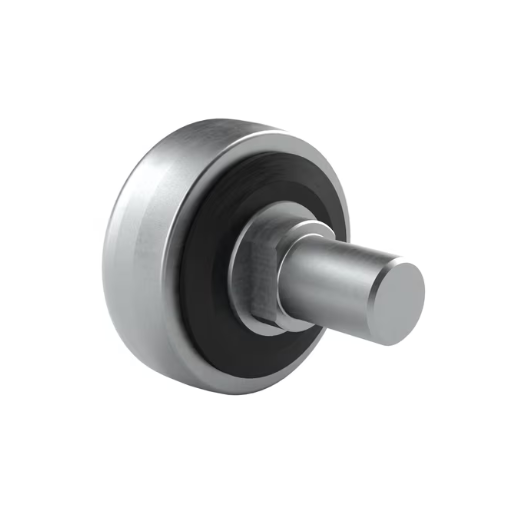
Manufacturing Uses of Cam Followers
Cam followers are crucial components in several manufacturing applications, especially due to their durability and ability to support large radial and axial loads. Here are five important ways cam followers are used in the manufacturing field:
- Automation Systems: The cam followers are part of a conveyor belt and an automated assembly line, where motion control is critical. They would, for example, guide the movement of an automated arm in repeated processes for efficiency and reduced downtime. These cam followers are usually made-to-measure so that they can carry several load capacities, for example, 500 kg up to over 2,000 kg load on the system.
- Textile Machinery: Cam followers in textile machinery are used for high-speed operations that need components to be dependable in the production of fabrics. These applications include guiding rollers that maintain tension and alignment during weaving and spinning. Advanced needle cam followers in textile machinery help reduce friction by approximately 30% and extend the life of the operation cycling intervals, thus decreasing maintenance costs.
- Packaging Equipment: Daggers carry out various movements such as indexing, sealing, and conveyance of items through automated lines inside packaging machines to regulate throughput capacity. Packaging line cam followers, for example, heavy-duty ones, can last 150,000 cycles before failure, ensuring maximum uptime of packaging machinery.
- Food Processing Machines: On hygienic-grade cam followers are used in food processing equipment such as dough mixers, conveyor ovens, and chopping systems. These cam followers are mostly stainless steel or coated using special materials to prevent corrosion and be FDA approved. Corrosion-proof cam followers enable food manufacturers to improve the working life of their equipment and adhere to stringent safety regulations.
- Metalworking Equipment: Cam followers assist in metal stamping, cutting, and forming systems by ensuring proper lateral movement inside die sets and presses. Metalworking high-load cam followers can withstand pressures of up to 20,000 pounds, achieving greater consistency on part dimensions and a reduction in tool wear.
These examples are indicative of the versatile functionalities offered by cam followers in the enhancement of many manufacturing operations, working as key elements that increase speed, precision, and reliability across multiple industries.
Automation and Track Rollers in Robotics
Robotic systems need track rollers to ensure the high precision and durability required in carrying out the automated jobs. They serve as rolling elements that bear loads within robotic systems, allowing linear motion and varying load and speed conditions for smooth operation. Applications include robot arms, AGVs (Automated Guided Vehicles), and CNC (Computer Numerical Control) machines, where track rollers guide movement with minimal friction and utmost precision.
Modern track rollers are now designed to endure drastic variations in operational environments such as high-speed cycles and extreme temperatures with excellent load-carrying ability. Materials such as precision-grade steel, subjected to meticulous heat treatment, or special coatings like chrome plating or zinc plating, serve to enhance resistance to wear, corrosion, and deformation. Amongst other things, state-of-the-art track roller designs incorporate seals that protect against contamination from dust or liquids, thereby heightening reliability.
Furthermore, the aforementioned advancements in robotic automation utilize track rollers for adaptive control, thereby facilitating smooth interfacing of track rollers with sensors and actuators in the system. For example, at micrometric accuracy, linear motion by track rollers is crucial in semiconductor making or medical device assembling for the reduction in operating cost, lowered downtime, and extended system life.
By utilizing the reliability and efficiency of track rollers, manufacturers are progressively pushing the limits of automation for performing more complex tasks with greater precision, speed, and consistency. The track roller is pushing automation in the industries of logistics, healthcare, and advanced manufacturing.
Aerospace Applications of Roller Bearings
Roller bearings constitute one of the most vital aspects for the aerospace industry, where precision, reliability, and durability are demanded. These components are built to withstand severe environmental heat, loads, and vibration, hence their use in aerospace systems having just the right specifications. Given below are five applications of roller bearings in the aerospace industry:
- Jet Engine Shafts: Roller bearings are necessary for supporting the high-speed rotation of jet engine shafts. They minimize friction and provide smooth operations in the presence of immense heat and loads. For example, cylindrical roller bearings capable of working at temperatures higher than 500°F (260°C) are rarely used for this purpose.
- Landing Gear Systems: Roller bearings are used in aircraft landing gear systems to withstand huge impact forces generated during landing and taxiing. Tapered roller bearings are mainly used to react to combined axial and radial loads during these operations to provide safety and security for the landing process.
- Flight Control Systems: Precision bearings enable the flight control surface bearing smooth movement of the ailerons and rudders. The crossed roller bearings have the capability of taking multi-directional loads for fine control adjustments essential to safe flight operations.
- Satellite Deployment Mechanisms: Aerospace roller bearings play an important role in satellite deployment at orbital altitude. Such bearings must be capable of operating perfectly in a vacuum environment, with their lubrication system specially designed to ensure reliability through the last critical moments of deployment.
- Turbopumps in Rocket Engines: Roller bearings in heavy-duty turbopumps help them push fuel and oxidizers into the rocket combustion chambers as the pumps themselves actually achieve very high rotation speeds-about 100,000 rpm. Therefore, special materials such as ceramic-coated rollers are used because they decrease wear in the long term in these conditions.
The installation of roller bearings in these systems is an example of how precision engineering and material science jointly serve the demanding needs of aerospace applications. It’s high loads, resistant to extreme environmental factors, operates with maximum efficiency, and makes modern technology of aviation and space exploration truly reliable.
Advantages of Using Cam Followers and Track Rollers
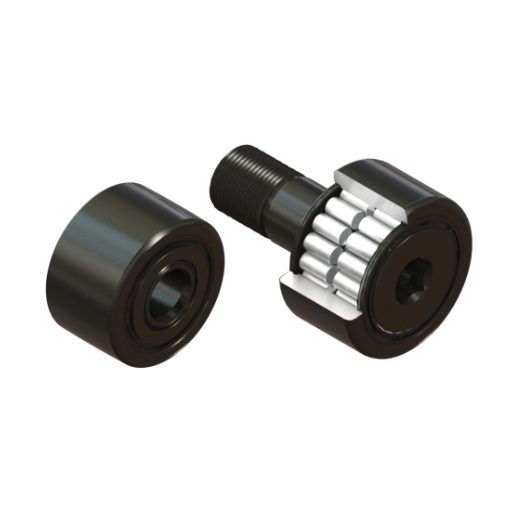
Improved Load Capacity and Durability
When considering the greater load capacity and longevity of cam followers and track rollers, emphasis should be placed on the fact that these components have been devised to carry heavy radial and axial loads because of their sturdy construction and exact design. With regard to bearing increased load stresses, one should also look into the fact that cam followers and track rollers are generally made of high-grade materials with modern manufacturing techniques to function well under adverse conditions.
I would also draw attention to the advanced surface treatment and heat treatment employed for the capacity and, more importantly, the durability of these components. This gives them superior resistance to wear, fatigue, and corrosion so that cam followers and track rollers can be sustained over long operating cycles with negligible demand for maintenance. This level of dependability becomes very important in applications where the production losses from any downtime are inordinately high.
Lastly, from my perspective, another protection layer in safeguarding these systems from contaminants such as dust, debris, and moisture is granted by the innovative sealing arrangement contained within cam followers and track rollers themselves, thus prolonging service life and reducing premature failures. Quite clearly, with all these evolutionary advances, they are a big boon to industrial and mechanical systems on which very high demand is placed.
Precision and Versatility in Operations
Precision is of the essence in mechanical systems so as to ensure performance under slight deviations, reliability, and efficiency, especially where industries demand top-performing technical systems due to working conditions. Modern cam followers and track rollers are manufactured with the utmost tolerances, reducing the build-up of deviations and empowering them to achieve the highest operational performances. They are versatile due to the various applications involved, ranging from linear motion systems to heavy-duty conveyance.
The use of advanced materials, such as through-hardened or case-hardened stee,l renders better durability and capacity to bearing loads. Customized geometries and configurations like crowned profiles or eccentric designs empower such components to attain perfect alignment and stress distribution even where angular misalignments or load variations come into consideration. This ensures that both precision and performance are maintained, even in a dynamic environment.
A data-driven strategy, with support from contemporary computational modeling and testing methods, has helped to shape the optimization of these components; manufacturers can use virtual simulations with utmost precision to evaluate stress distributions, fatigue life, and material performances. The synergy through this technology would emphasize the importance of precision and flexibility to reach high standards of operation while keeping downtime and costs for maintenance low.
Maintenance Tips for Optimal Performance
- Establish a Regular Inspection Schedule: Unscheduled inspections can more than likely miss the signs of potential development of problems. When critical components carrying the system are checked for wear, corrosion, or alignment errors, system reliability can, in most cases, be greatly improved. Where possible, the inspections should incorporate the use of advanced detection equipment such as infrared thermography or ultrasonic testing to locate hidden defects in mechanical or structural parts.
- Implement Proper Lubrication Practices: The main thing is to lubricate adequately to create friction resistance and increase the lifespan of a few critical machines. Select lubricants according to manufacturer specs, the environment of operation, and the usage of the equipment. Periodically analyzing the condition of the lubricant (e.g., oil analysis) provides data regarding contamination levels and the health of the components.
- Calibrate Equipment Precisely: Ensures that and maintains calibrated high-performance systems. Use advanced calibration tools to increase the interval between calibrations as recommended by the supplier. Uncalibrated equipment can lead to operational inefficiency, high energy costs, and inferior production quality.
- Control Environmental Conditions: Environmental parameters affect the life of equipment; hence, the control of temperature, relative humidity, and particulate pollution is required. Climatic control systems or protective enclosures keep components from deteriorating from unwanted environmental parameters, while air-quality monitoring ensures that any contamination in the environment is within permissible limits.
- Use Predictive Maintenance Technologies: Predictive maintenance technologies, such as IoT sensors and machine-learning algorithms, will allow you to monitor and generate alerts on possible anomalies. Vibration analysis helps detect imbalances, misalignments, or bearing faults early, thereby ensuring maintenance decisions are made in a proactive rather than reactive fashion.
- Train Personnel Effectively: A skilled, well-trained, and knowledgeable workforce ensures optimal operational efficiency. Thus, providing training on modern diagnostic tools, safety standards, and equipment-specific procedures will contribute to reducing errors and increasing system reliability. Updates on any developments should be included.
Thus, the maintenance techniques will allow organizations to reduce unplanned downtime and thereby enhance performance, reduce operational expense, and confer longer life on the equipment.
Choosing the Right Cam Followers and Track Rollers
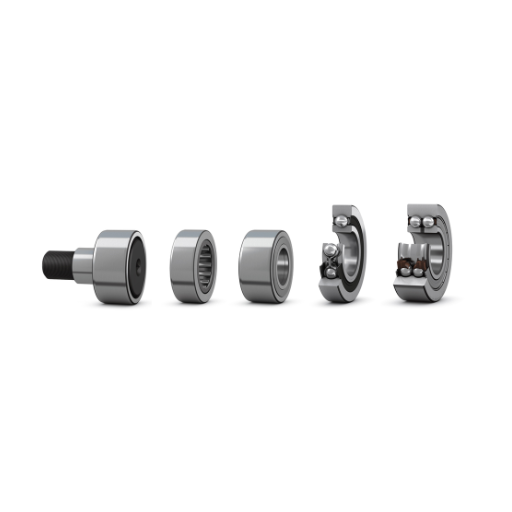
Factors to Consider: Load Requirements and Speed
Load requirements bear the influence when considering the selection among cam followers and track rollers in choosing the right size, material, and structural design of the component. Axial and radial load capacities ought to be well-studied before designs go ahead because the system might fail, or the integrity compromised if these are underestimated. For harsh operating conditions, components subjected to heat treatments from alloy steels or having special surface treatments might stand well against wear. Further, dynamic and static load ratings should be assessed relative to operational conditions so that systems still operate at their peak during high-stress cycles.
Speed stands as a factor that directly influences the reliability and working life of these components. Cam followers and track rollers must be selected with a rolling element design in mind that simultaneously acts by reducing friction and heat production at high speeds. For example, high-speed rotational applications are almost always needle bearing applications due to their ability to ensure smooth motion and resist wear. Furthermore, consideration must be given to the lubrication system, as improper lubrication or a lubrication system that is incompatible with the working conditions will result in accelerated wear and subsequent failure.
The application of engineering techniques characterized by precision grooves and seals could improve performance criteria by reducing contamination and promoting even load distribution. From a material point of view, modern cam followers and track rollers are designed to sustain thermal expansions at a very high speed while remaining structurally steady under different loads. By combining deep knowledge of load requirements and speed thresholds with the latest technological advancements, an organization may secure the longevity and cost-efficient working of its mechanical systems.
Operating Environment and Compatibility
Cam followers and track rollers must be chosen after carefully evaluating operating conditions to accomplish the design goal of functionality and life. Factors like different temperature ranges, exposure to contaminants, vibration, and corrosion checks must be thoroughly analyzed. For example, where high temperatures should be considered, components with heat-resistant alloys or advanced coatings could be beneficial to performance and avoid thermal degradation. In cases of corrosive moisture or chemical environments, Corrosion-resistant materials like stainless steel or special sealing are on top of the choices.
On the other hand, it is equally important that they are compatible with an existing mechanical system. Ensuring cam followers’ dimensional tolerances and load specifications with those of the overall system minimizes premature failures. Moreover, specialized lubricants that cater to specific operation conditions-extreme pressure, low temperature, or high speeds-are yet another factor that contributes to system efficiency and operational life. New-age manufacturing technologies are also capable of producing custom solutions suitable for harsh environments, thus ensuring a fit-for-purpose integration with individual industrial processes.
If designers take into consideration all these factors in a systematic manner and use the latest product innovations, they can guarantee reliability at a reasonable cost and long-term performance in diverse applications.
Frequently Asked Questions (FAQ)
Q: What are cam followers and track rollers used for?
A: Cam followers and track rollers are essential components in various machinery and automation systems, designed to follow the contour of a cam or track. They are engineered to handle high radial loads while ensuring minimal deflection, thus maintaining the integrity of the machinery’s operation.
Q: What is the difference between stud-type cam followers and yoke style?
A: Stud-type cam followers feature a stud that allows for mounting directly onto a shaft, while yoke-style cam followers have a yoke that can accommodate different mounting configurations. Both types are designed to follow tracks or cams effectively, but may differ in installation and application flexibility.
Q: How do I choose the right outer diameter for my cam followers?
A: Selecting the correct outer diameter (OD) for cam followers involves considering the specific application requirements, including the load capacity and space constraints. It’s important to match the outer diameter with the track or cam profile to ensure optimal performance.
Q: What materials are cam followers typically made from?
A: Most cam followers and track rollers are made of steel, providing the necessary strength and durability to withstand high dynamic and radial loads. Some may also feature surface treatments for enhanced wear resistance and lubrication.
Q: Can cam followers be relubricated, and why is it important?
A: Yes, many cam followers are designed with lubrication holes that allow for relubrication. Regular lubrication is crucial for maintaining the bearing capacity and extending the lifespan of the followers, especially under high speeds and loads.
Q: What is a full complement design in cam followers?
A: A full complement design in cam followers refers to a configuration where the inner race contains the maximum number of rolling elements. This design increases the dynamic load capacity, making it suitable for applications with higher loads and minimal deflection requirements.
Q: What role do end plates play in cam follower assemblies?
A: End plates are used to secure the rolling elements within cam follower assemblies, ensuring proper alignment and preventing contamination. They also provide additional support to the outer ring, enhancing the overall stability of the assembly.
Q: What are crowned cam followers, and when should they be used?
A: Crowned cam followers feature a rounded outer surface, which allows for better contact with the cam profile and improved load distribution. They are ideal for applications where alignment may be an issue, as they can accommodate slight misalignments while maintaining performance.
Q: Are there specific applications where track followers are preferred over cam followers?
A: Track followers are preferred in applications where guiding along a fixed path is critical, such as in conveyor systems or automated machinery. Their design allows them to handle axial and circumferential loads effectively, making them suitable for dynamic movements.
UCTH213-40J-300 with Setscrew(inch)
CNSORDERNO: Normal-duty(2)
TOGN: UCTH213-40J-300
SDI: B-R1/8
SD: 2 1/2
UCTH212-39J-300 with Setscrew(inch)
CNSORDERNO: Normal-duty(2)
TOGN: UCTH212-39J-300
SDI: B-R1/8
SD: 2 7/16
UCTH212-38J-300 with Setscrew(inch)
CNSORDERNO: Normal-duty(2)
TOGN: UCTH212-38J-300
SDI: B-R1/8
SD: 2 3/8
UCTH212-36J-300 with Setscrew(inch)
CNSORDERNO: Normal-duty(2)
TOGN: UCTH212-36J-300
SDI: B-R1/8
SD: 2 1/4
UCTH211-35J-300 with Setscrew(inch)
CNSORDERNO: Normal-duty(2)
TOGN: UCTH211-35J-300
SDI: B-R1/8
SD: 2 3/16
UCTH211-34J-300 with Setscrew(inch)
CNSORDERNO: Normal-duty(2)
TOGN: UCTH211-34J-300
SDI: B-R1/8
SD: 2 1/8









